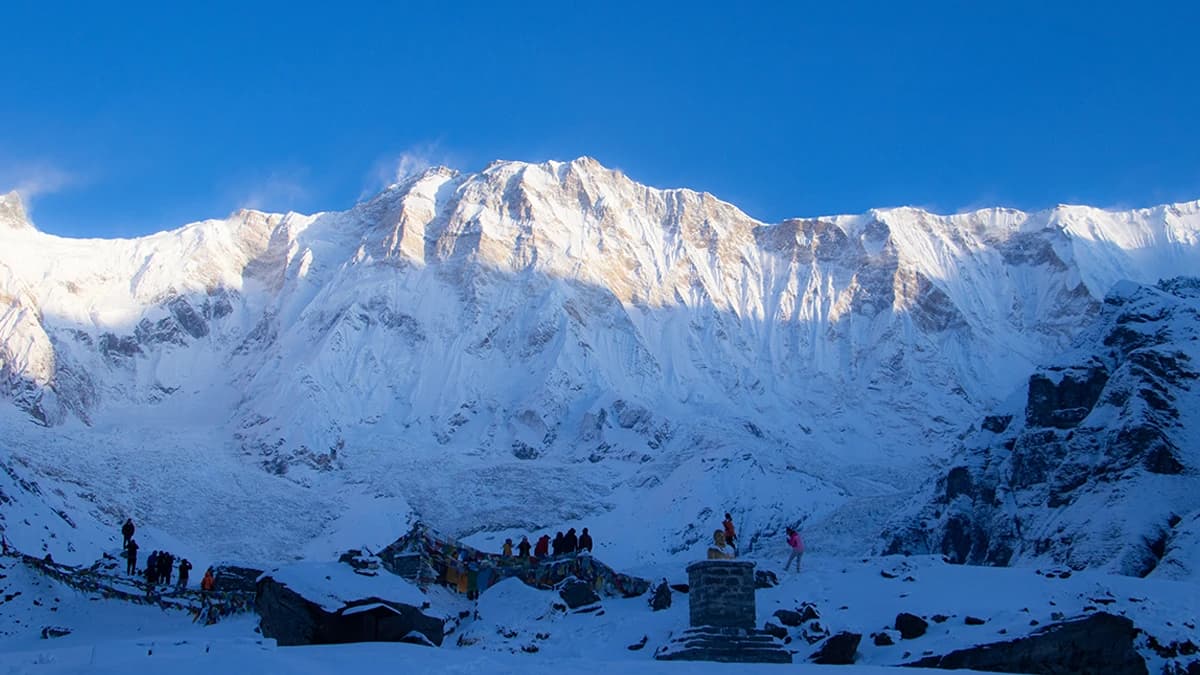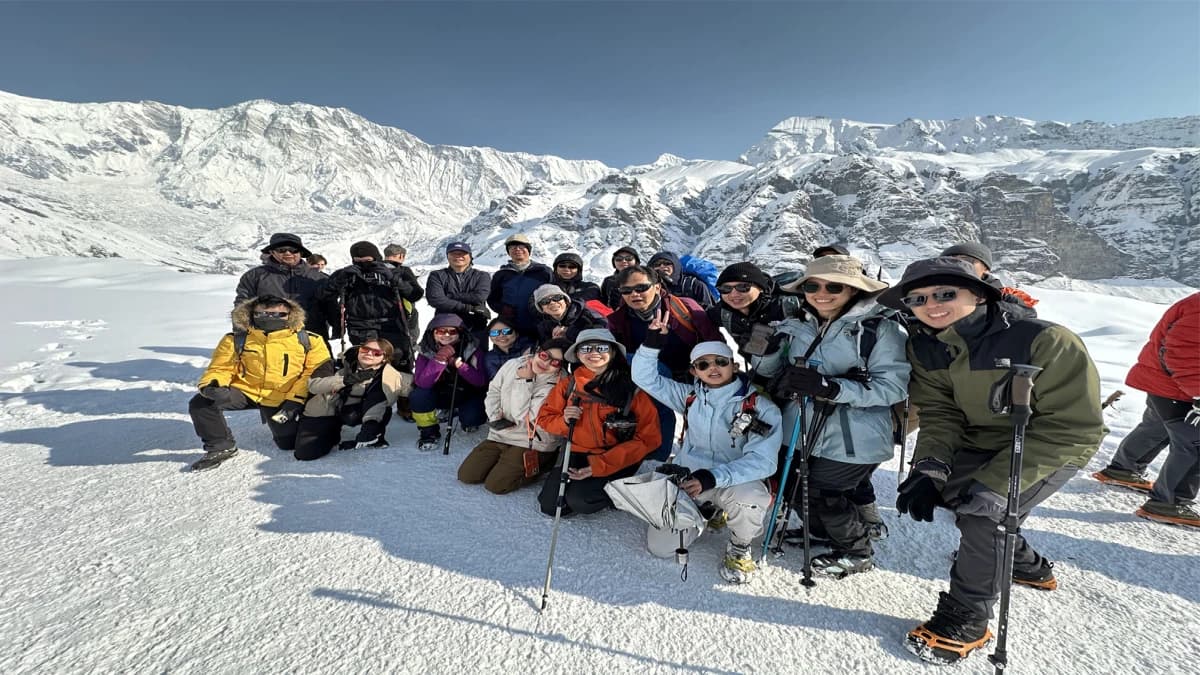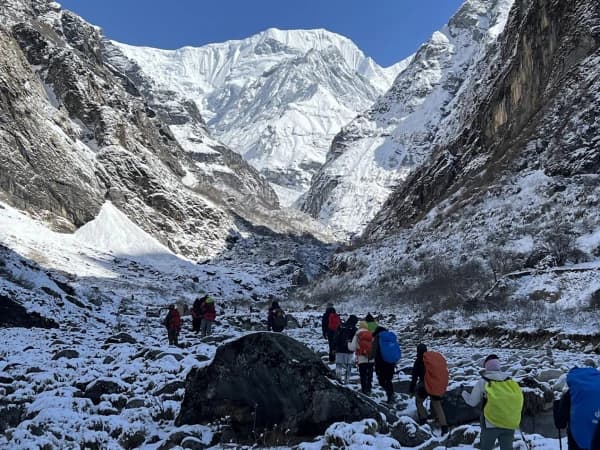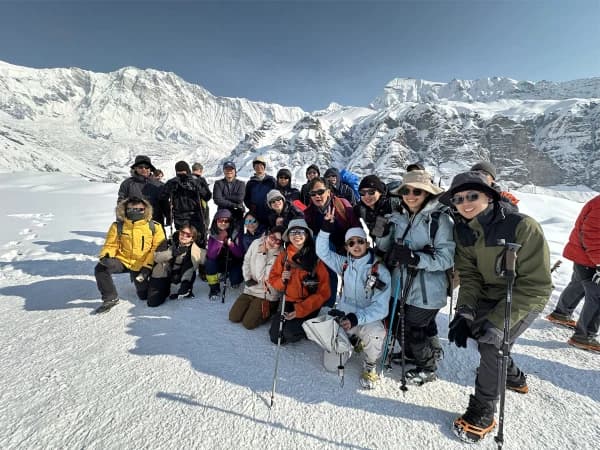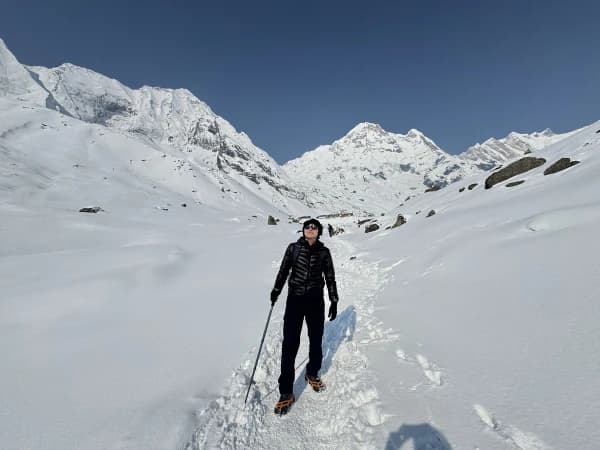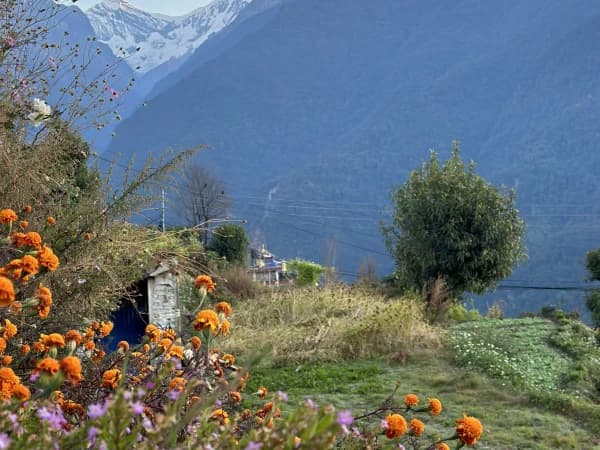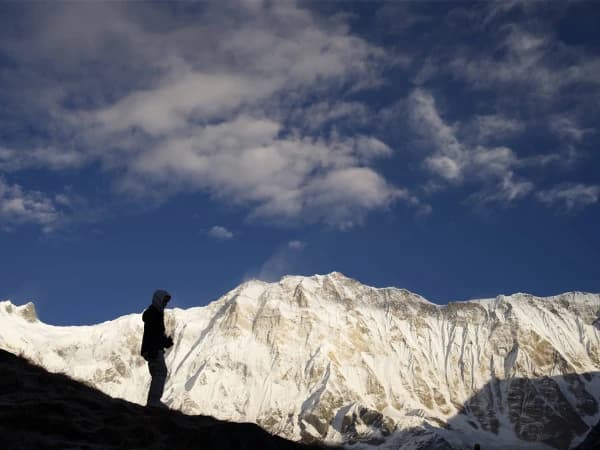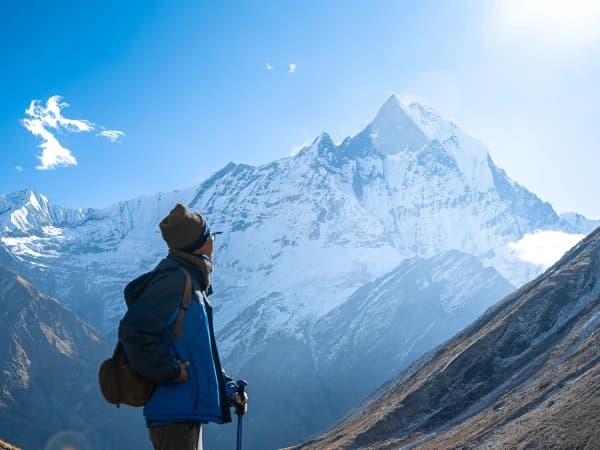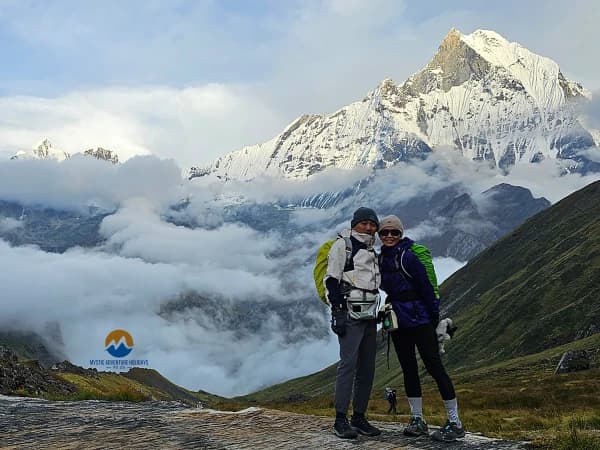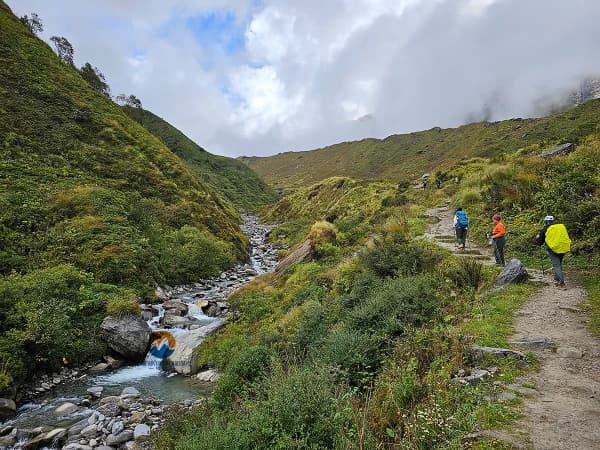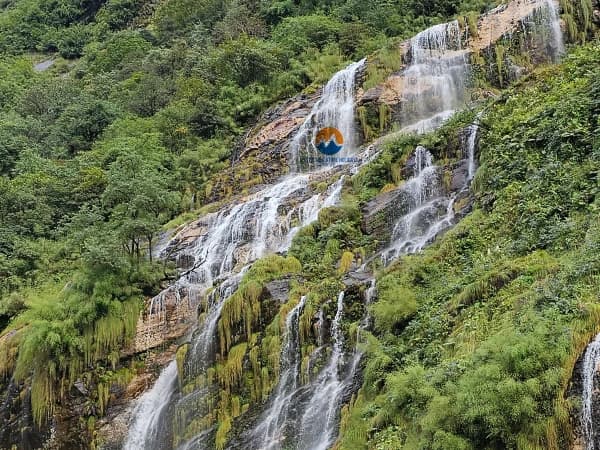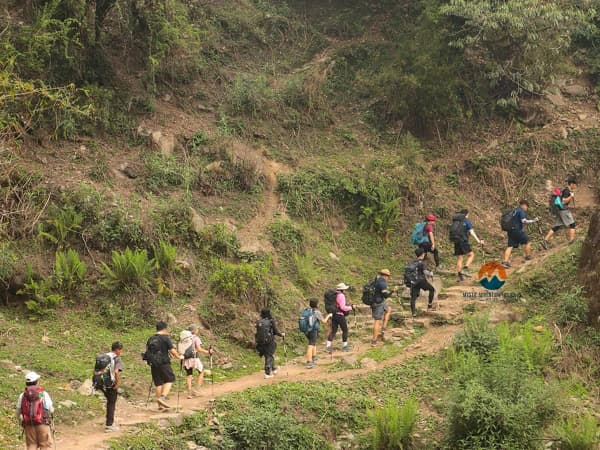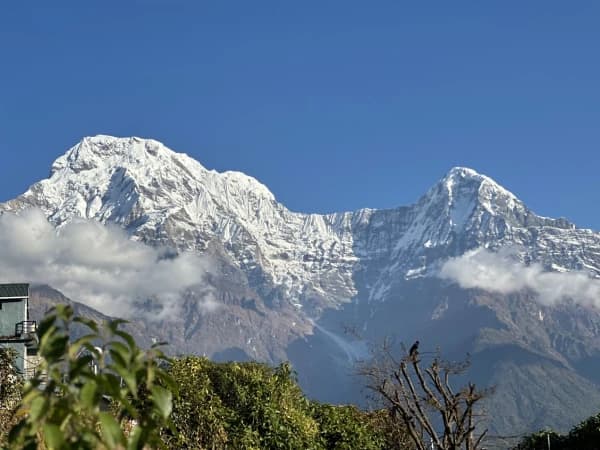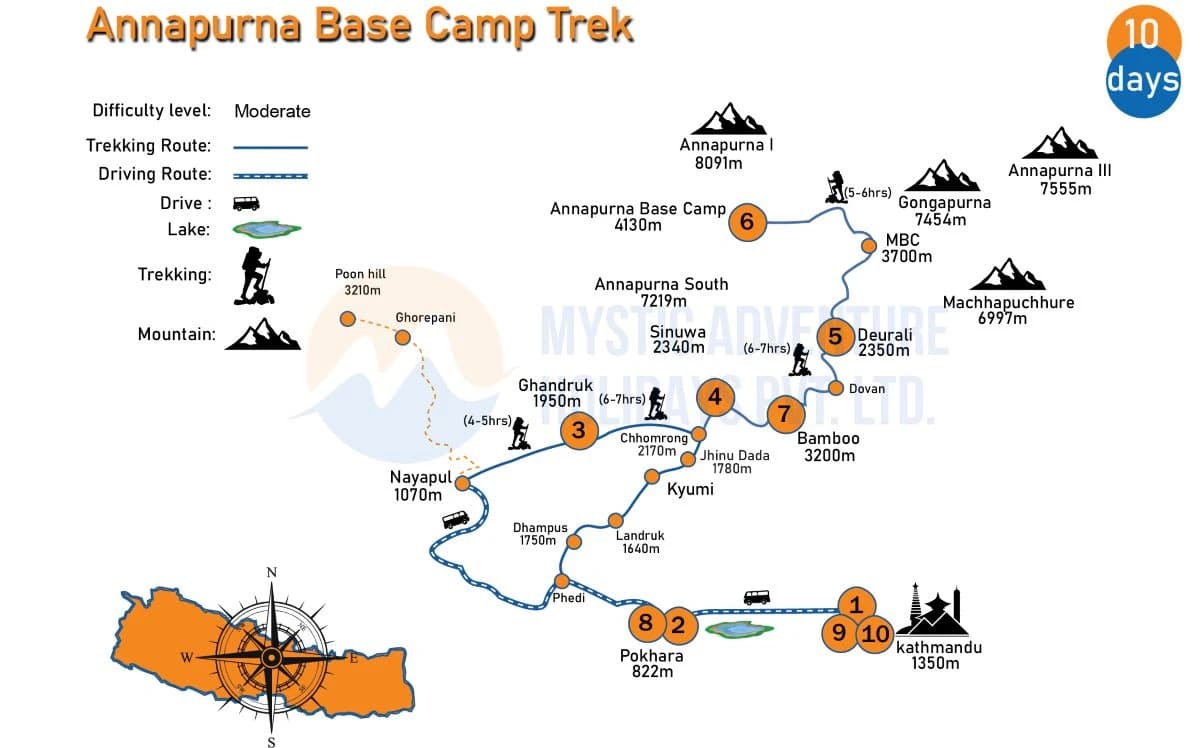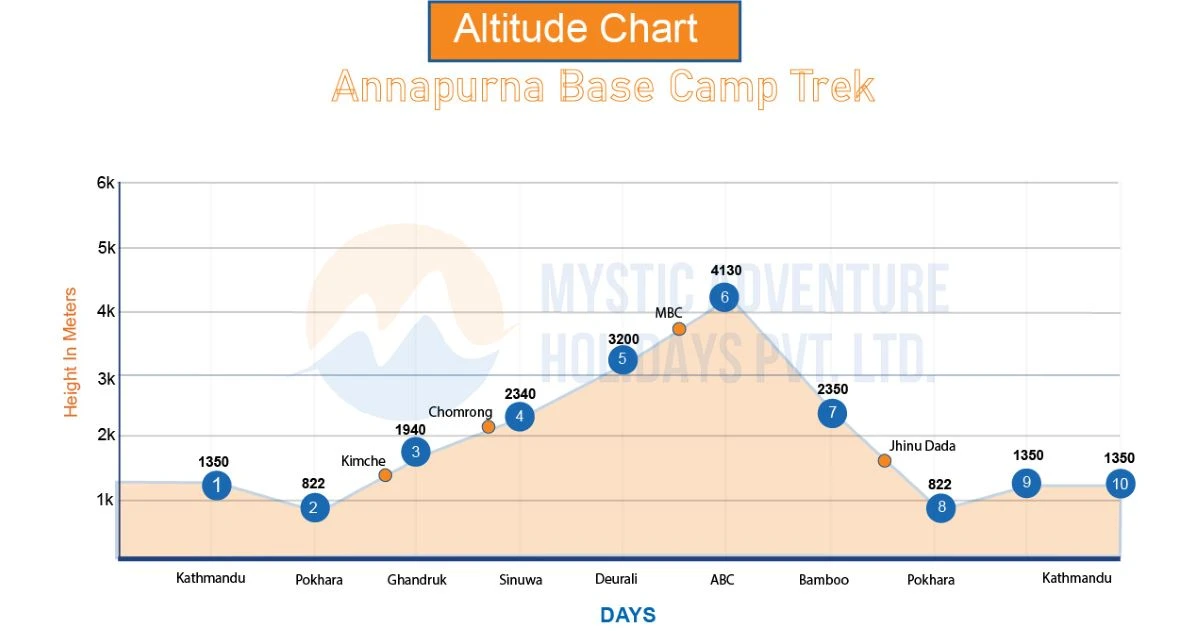2025 Annapurna Base Camp Trek is one of the most popular trekking routes in Nepal. It takes you to the base camp of Mount Annapurna. The trek offers stunning mountain views, diverse ecosystems, and rich cultural experiences, all within 10 days of the Annapurna Base Camp trek itinerary (official).
General Highlights of 2025 Trek
- Scenic drive from Kathmandu to Pokhara with views of the terraced farms, settlements, and green valleys.
- Scenic views of the annapurna range mountains, including annapurna I, Dhaulagiri, and machhapuchhre, during the trek.
- Trek to the maximum altitude of 4,130 m at Annapurna Base Camp.
- Breathtaking 360-degree views of the surrounding mountains from annapurna base camp.
- Trekking through the lush rhododendron forests and terraced fields.
- Stops at the culturally rich villages like ghandruk and Chomrong.
- Get to experience the local Gurung and Magar culture and hospitality.
- Relax in the natural hot springs at Jhinu Danda.
- Exploration of the Annapurna conservation area and its rich biodiversity.
- Stay in comfortable lodges and teahouses and experience the warm hospitality of the locals.
- Trekking to iconic base camps like Machhapuchhre Base Camp(MBC).
Brief Overview of 2025 Trek
The Annapurna Base Camp trek itinerary starts with your arrival at the Tribhuvan Airport. It continues with the scenic drive to Kimche (starting point of the trek) via Pokhara. Kimche, being a starting point of the trek, marks your official journey point in the Annapurna region. From Kimche, you will trek to the Annapurna Base Camp through several places on the way, including Ghandruk, Sinuwa, and Machhapuchhre Base Camp.
Upon reaching the ABC, you will have some time to capture the moments. Then, you will start your descending journey to the Jhinu Danda. The descending journey is faster than the ascending one. At Jhinu Danda, you will complete your trek. From Jhinudanda, you will drive to Pokhara and then to Kathmandu. It will mark the end of the ABC trek itinerary. From Kathmandu, you can go to your next destination.
During the whole journey, you will be introduced to several mountains. The peak you will see includes Annapurna I (8,091 meters), Annapurna South (7,219 meters), Mt. Manaslu (8,163 meters), Mt. Dhaulagiri (8,167 meters), Hiunchuli (6,441 meters), and Machapuchhre (6,993 meters).
Among all the highlights, the cultural experiences are also one of them. During the trek, you will spend nights in villages like Ghandruk, Chhomrong, Sinuwa, Deurali, and Dovan, home to the Gurung and Magar ethnic groups. These groups represent the rich and unique culture and lifestyle. Through this trek, you can explore these unique lifestyles and cultures.
The ABC trek takes you through the diverse landscapes from lush forests to alpine meadows within the Annapurna Conservation Area. If you are lucky, you may see the rare and endangered species like the snow leopard, red panda, and musk deer along with the other species like barking deer and various primates.
If you want to learn more about the trek or have some questions, here is the list of faqs.
Special Highlights for 2025 Season Trek
-
Chomrong village (2,170 meters)
Chomrong is a beautiful village located at the base of the Modi Khola inside the Annapurna Conservation Area. It is one of those villages that existed before the tourism flourished in the annapurna region. The majority of the people residing in Chomrong village are Gurungs. The attrcation of the village are a snooker hall, a bookstore, and a beautiful Buddhist stupa, which makes the village a must-visit destination in the Annapurna region. Also, the village is the major stop for treks like the ghorepani poonhill trek and the abc trek with a helicopter return.
-
Sinuwa (2,360 meters)
Sinuwa is one of the major stops along the ABC trekking in nepal. The village is divided into two sections: lower Sinuwa and upper Sinuwa. From the Sinuwa, you can see the peaks like Annapurna South and Machapuchare. There are several guesthouses in Sinuwa where you can relax and enjoy delicious food items. Both upper and lower Sinuwa villages are accessible from the spot like Chhomrong. The village is rich in traditions and cultures. So, it becomes an excellent place to immerse oneself in the unique culture and traditions.
-
Jhinu Danda (1,760 meters)
Jhinu Danda is the destination near the Modi Khola along the in Nepal. The Danda is easily accessible from the Pokhara. It is the popular stop for the treks like short annapurna base camp trek, Jhinu Danda Trek, and Ghorepani Ghandruk & Jhinu Danda Trek. The main attraction of the Jhinu Danda is its natural hot springs. These hot springs have therapeutic properties. In addition, terraced fields and forests surround the hot spring.
-
Naya Pul (1,070 meters)
Nyapul is a small village located on the way of the ABC trekking trail. The village serves as the starting point for several other treks, including the Annapurna Circuit trek and the Ghorepani Poon Hill trek. It is also known for the local culture and lifestyle. There is a significant number of Gurung people in the village, along with other diverse ethnic groups. The lush landscapes, sloping hills, and terraced fields that surround it create a vibrant green backdrop. Machhapuchre and Annapurna south can be seen from viewpoint of the Nayapul.
-
Machhapuchhre Base Camp ( 3,700 meters)
Machhapuchhre Base Camp is a popular trekking destination located in the Annapurna region of Nepal. It is one of the prominent stops for trekkers who are heading towards the Annapurna Base Camp. From the Machhapuchhre Base Camp, you can see the peaks, including Annapurna and machhapuchhre. There are several lodges and teahouses from which you can enjoy those beautiful views. The Gurung ethnic group, which is well-known for its friendly hospitality and delicious cuisine, runs the majority of the lodges.
Why us for Annapurna Base Camp Trek Package 2025?
3S: Safety, Success, and Satisfaction
We are the best local tour operator
Booking an Annapurna Base Camp trek package 2025 with Mystic Adventure Holidays offers superior service and benefits. Here's why:
- Client Safety: Our trips are organized with the utmost safety in mind.
- Best Price Guarantee: Ensuring you get the best value.
- Free Transfers: Complimentary airport-to-hotel and return transfers in a private vehicle.
- Expert Guides: Trained, government-licensed local guides with extensive route knowledge.
- Support for Locals: Helping local communities earn a living through tourism.
- Health Monitoring: Oximeters to monitor oxygen levels during high-altitude ABC treks.
- Medical Preparedness: Guides equipped with medical kits to handle any situations that may arise.
- Essential Gear: Arrangements for sleeping bags and down jackets.
- Free Storage: Secure storage at our office for extra luggage during your tour.
- Convenience: Duffel bags for transferring items to be carried during the journey.
- Porter Service: A free porter to help carry your heavy bags.

